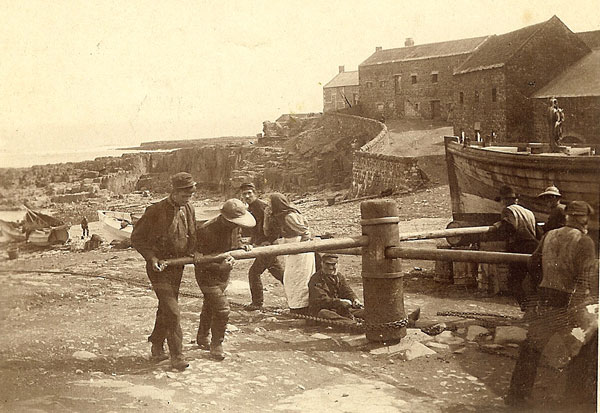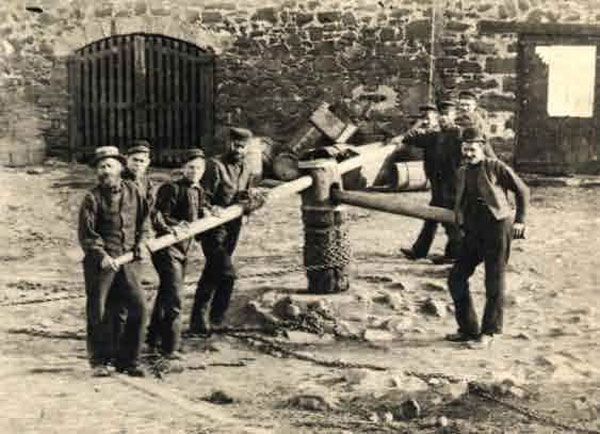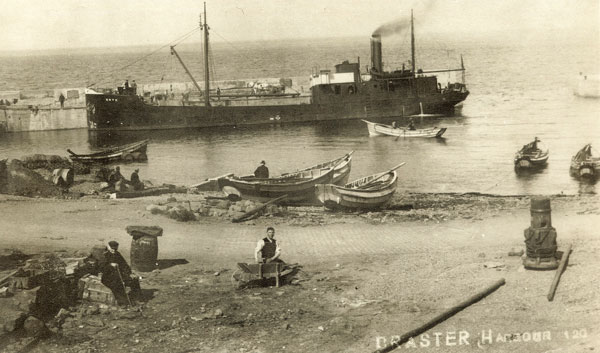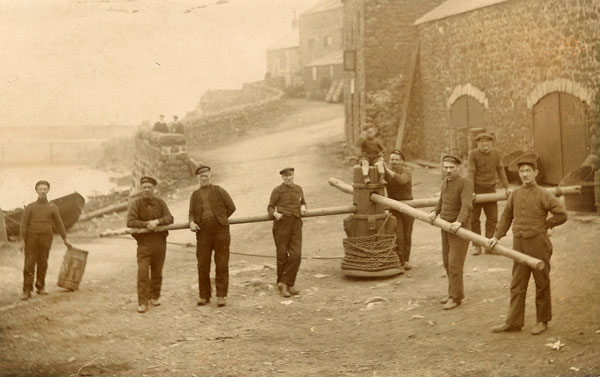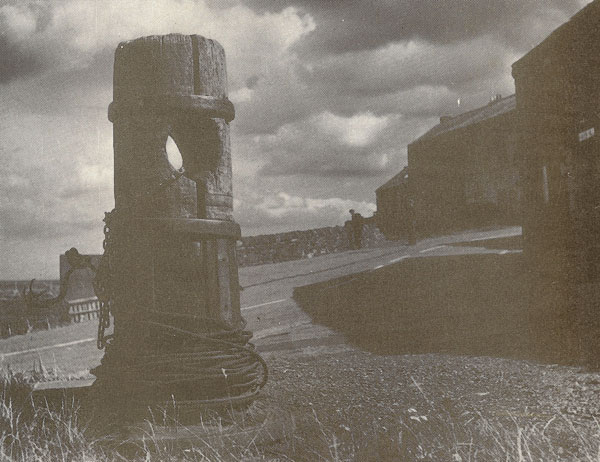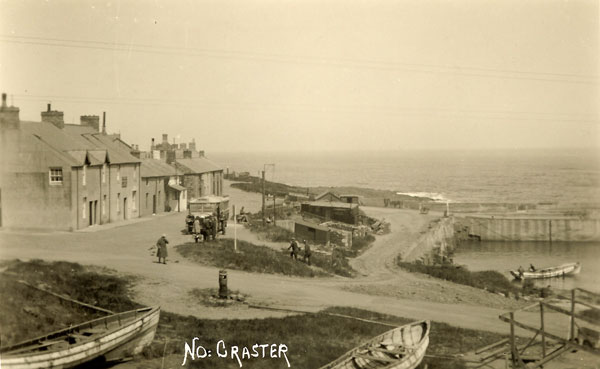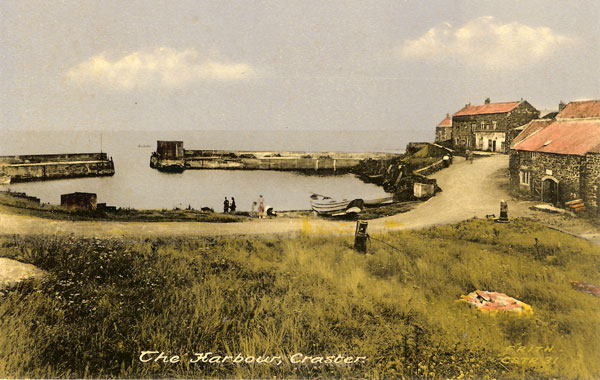 |
|
Archway - Tower Bank |
CapstansThere were two capstans on the harbour foreshore; these were used to pull boats across the foreshore by rolling them over wooden rollers. This was needed to move boats to safety when the weather renders the harbour too dangerous for them to be moored against the piers. Jack Browell remembers that the outer end of the poles were manned by the younger folk as they had further to travel! Of course, the driving force nowadays is no longer manpower, but a diesel engine housed in the winch house adjacent to the lifeboat station. The first photograph was taken prior to the construction of the harbour in 1906. It shows a group using the capstan to haul a boat onto the foreshore. The man seated on the ground is guiding the chain to ensure that it remains properly seated on the capstan post. Each bar is manned by two people and, as you can see, the women of the village also joined in. However, there is room on each bar for several more to lend their weight. The boat behind the capstan is a herring boat and the wall up haven Hill can be seen to bend in front of the old kipper sheds. The splendid hat in the foreground is a sou-wester worn backwards. At this moment in time, none of the people in these photographs have been identified. If you recognise anybody, please let us know.
The following photographs show the more southerly capstan, somewhere in front of the former smokehouse building.The first thing that strikes you is its size, some five feet tall with bars each long enough to accommodate six men.
The next photograph was a postcard, posted in 1907, showing the view inland to Norwell Brow. The building in the background on the left may have been the 'black sheds', which were used to salt herring. When necessary, the wire/chain from the capstans was directed around other posts or through bolts in the ground in order to vary the direction of pull. This allowed boats to be distributed around the foreshore when they were pulled ashore. Indeed, as the photograph shows, it was possible to place boats behind the capstan.
In the next photograph, dated 1913 by Eva Archbold, we are given a sea view. The ship is loading stone from the quarry. The crushed stone was loaded from the bins on the south pier, but stone blocks were loaded directly into the ships from the north pier. A pair of horses and cart can be seen amid ship. The photograph shows a working foreshore with barrels, spars and boats in an untidy clutter. The road appears to be cobbled, with regular whin stone setts, but the foreground is bare earth.
The identity of the men in the following photograph is unknown, except for the one stood on the extreme right, who is thought to be James Archbold. He died in the tragedy of the sinking of the Coble 'Provider', which was lost off Craster on February 10th 1928.
The capstans were removed when they had been replaced by the diesel winch. Eventually they simply got in the way. The northerly capstan was removed to make way for the RNLI slip way. Unfortunately, they were discarded and these fascinating pieces of Craster's history were lost. |
 |
Home Programme Membership Archive War Memorials History Walk Miscellanea Links Contact Us
